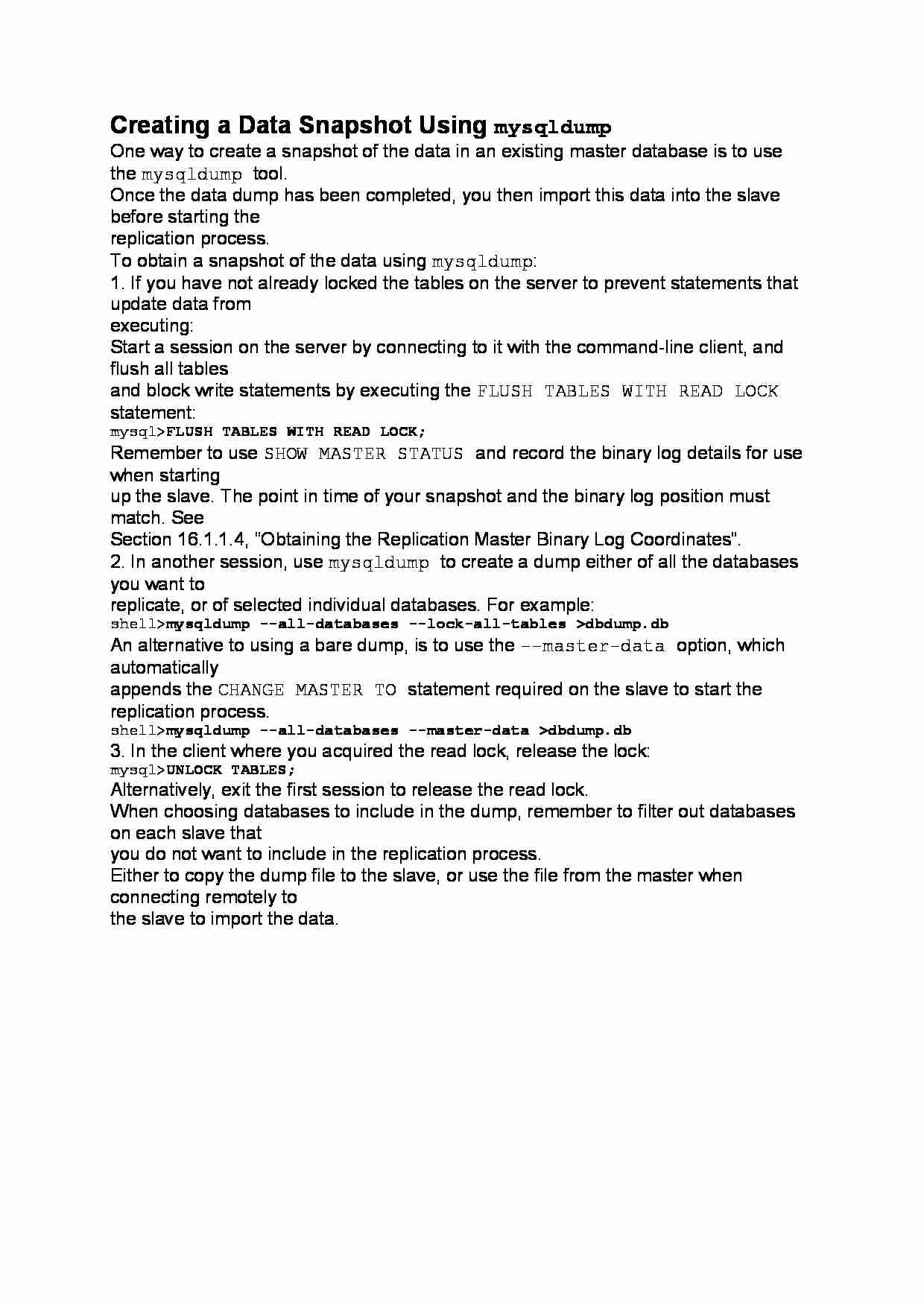
Creating a Data Snapshot Using mysqldump
One way to create a snapshot of the data in an existing master database is to use the mysqldump tool.
Once the data dump has been completed, you then import this data into the slave before starting the
replication process.
To obtain a snapshot of the data using mysqldump:
1. If you have not already locked the tables on the server to prevent statements that update data from
executing:
Start a session on the server by connecting to it with the command-line client, and flush all tables
and block write statements by executing the FLUSH TABLES WITH READ LOCK statement:
mysql FLUSH TABLES WITH READ LOCK;
Remember to use SHOW MASTER STATUS and record the binary log details for use when starting
up the slave. The point in time of your snapshot and the binary log position must match. See
Section 16.1.1.4, “Obtaining the Replication Master Binary Log Coordinates”.
2. In another session, use mysqldump to create a dump either of all the databases you want to
replicate, or of selected individual databases. For example:
shell mysqldump --all-databases --lock-all-tables dbdump.db
An alternative to using a bare dump, is to use the --master-data option, which automatically
appends the CHANGE MASTER TO statement required on the slave to start the replication process.
shell mysqldump --all-databases --master-data dbdump.db
3. In the client where you acquired the read lock, release the lock:
mysql UNLOCK TABLES;
Alternatively, exit the first session to release the read lock.
When choosing databases to include in the dump, remember to filter out databases on each slave that
you do not want to include in the replication process.
Either to copy the dump file to the slave, or use the file from the master when connecting remotely to
the slave to import the data.
... zobacz całą notatkę



Komentarze użytkowników (0)